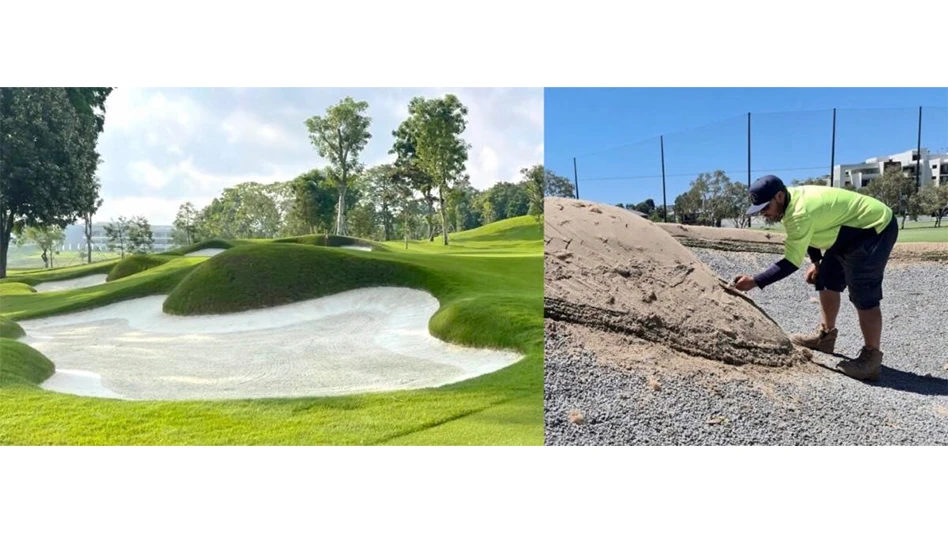 Paving the way
Paving the way
In an effort to spruce-up the course, Mark Pelkey, superintendent, and Senad Begovic, equipment technician, at the Lyman Orchards Golf Club in Middlefield, Conn., designed and built a template to make concrete pavers in-house. Scrap sheet metal was shaped and mig-welded into the template forms for a full-sized and half-sized paver measuring 6 feet by 9 feet and 4 1/2 feet by 9 feet, respectively. After the first forms were made, one bag of concrete was mixed with one ounce of dye to create an earth tone paver. They made more template forms after seeing the great results. It takes approximately 240 pounds of concrete to produce one-half pallet of pavers, for a total cost of $24. They are set up enough to remove from the forms and stackable the next day. Labor time is about 1 minute per paver regardless of the size and it takes about three hours to make a half pallet. Matt Fauerbach is director of agronomy, northeast region for Billy Casper Golf.
 Two birds, one stone
Two birds, one stone
The greens and collars at the Navesink Country Club in Middletown, N.J., are sprayed with a Chem Turf Spray Hawk. The Spray Hawk used to be transported by the person who drags the hose on the back of a separate turf vehicle. Brett Scales, superintendent, and Jose Rodriguez, equipment technician, conceived and built a bracket to transport the Spray Hawk on the back of the 2010 Chem Turf 200-gallon sprayer which is mounted on a 2010 John Deere Pro Gator 2030. The Raven sprayer control panel was moved toward the driver so the hose dragger could ride “shotgun” on the spray rig, which eliminated the use of the turf vehicle. The steel plate that holds the Raven was cropped to allow more passenger leg room. In addition, a 2-inch by 4-inch by 12-inch rectangular square tubing was welded to the steel plate for the Raven to be moved and mounted to the center of the dashboard. The Raven is in a fixed position, but it can be moved back to its original position. To secure the Spray Hawk to the rear of the sprayer, U-shaped metal brackets were welded on the sprayer frame to support the Spray Hawk axle. A clevis pin was welled to the Spray Hawk and then secured to the sprayer with a 1⁄4-inch-thick steel bar 24 inches long bolted to the sprayer frame. The rubber tubing was also duct-taped to ensure the Spray Hawk fits snugly into the U-shaped brackets.

Explore the February 2012 Issue
Check out more from this issue and find your next story to read.
Latest from Golf Course Industry
- Toro continues support of National Mayor’s Challenge for Water Conservation
- A different kind of long distance
- Golf Construction Conversations: Stephen Hope
- EnP welcomes new sales manager
- DLF opening centers in Oregon, Ontario
- Buffalo Turbine unveils battery-powered debris blower
- Beyond the Page 66: Keep looking up
- SePRO hires new technical specialist






